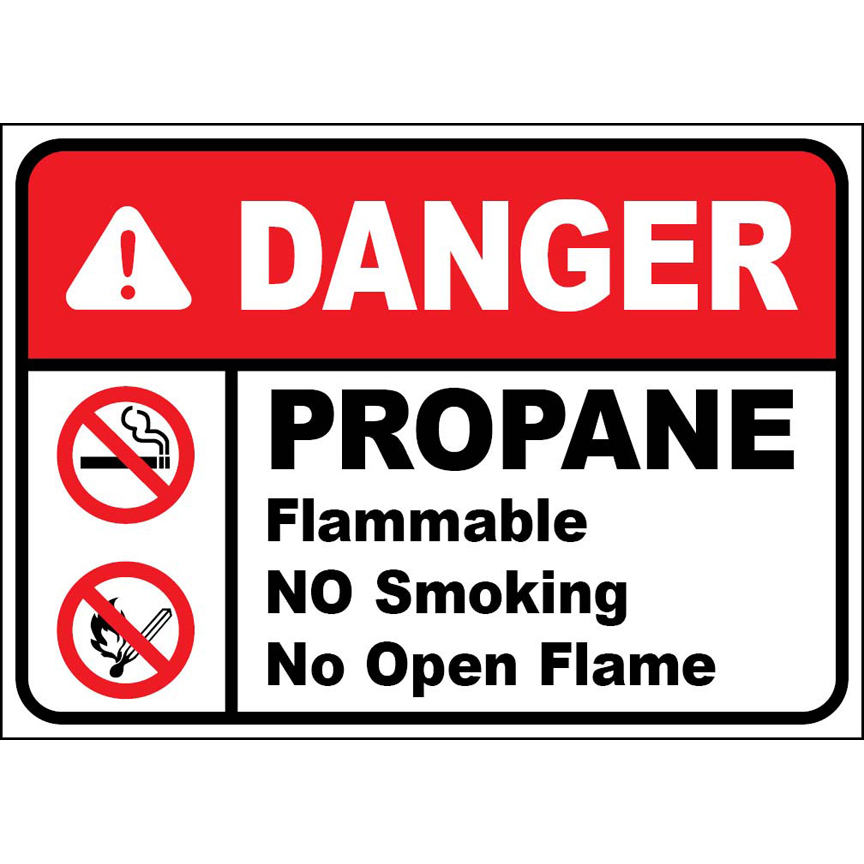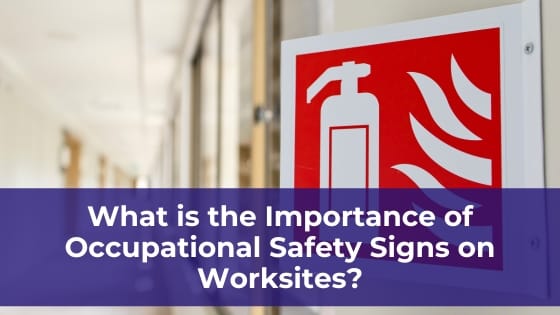Occupational safety signs are a standard and essential element of worker safety. You’ll find them at construction sites, development sites, industrial centers, manufacturing facilities and anywhere else a crew is working.
 Occupational safety signs get results and serve multiple roles on most worksites, including:
Occupational safety signs get results and serve multiple roles on most worksites, including:
- Improving workplace safety
- Improving regulatory compliance
- Improving emergency preparedness
- Improving wayfinding for visitors
These are valuable benefits for every hazardous site, and if your occupational signage is produced by an expert commercial printer, you’ll maximize their impact.
How Do Occupational Safety Signs Improve Worksite Safety?
The first job for every piece of occupational signage is safety, and these signs perform this job well, for several reasons:
- They rely on visual information – Safety signage utilizes easily recognizable iconography, colors and patterns to immediately get the message across.
- They are mounted close to worksite hazards – OSHA requires safety signs to be installed close to the hazard, so they’re designed for easy mounting.
- They are designed for maximum visibility – If your occupational signage is produced by an expert commercial printer, it will feature high-visibility colors and signal words that can be read quickly at a distance.
Safety signs are available for any potential hazard you would see at a worksite, including:
With a comprehensive selection of occupational signs to choose from, site managers can prioritize the biggest safety risks.
How Does Occupational Safety Signage Also Ensure Regulatory Compliance?
 Regulatory agencies including OSHA require occupational safety signage to be posted on the job site. In addition to the General Duty clause, which requires employers to take all reasonable measures necessary to ensure worker safety, OSHA has also published signage-specific regulations like 1910.45, which specifies the visual and placement standards for worksite signage.
Regulatory agencies including OSHA require occupational safety signage to be posted on the job site. In addition to the General Duty clause, which requires employers to take all reasonable measures necessary to ensure worker safety, OSHA has also published signage-specific regulations like 1910.45, which specifies the visual and placement standards for worksite signage.
The American National Standards Institute (ANSI) is another regulatory agency that works with OSHA to ensure occupational signage standards remain up to date with worker needs.
How Can Occupational Safety Signage Improve Emergency Response Times?
 Occupational signage doesn’t just prevent emergencies—it can also improve your crew’s response time when an emergency does occur. For example, some occupational signage points the way toward safety supplies (fire extinguisher, first aid kit, etc.) or helps people quickly evacuate from the site.
Occupational signage doesn’t just prevent emergencies—it can also improve your crew’s response time when an emergency does occur. For example, some occupational signage points the way toward safety supplies (fire extinguisher, first aid kit, etc.) or helps people quickly evacuate from the site.
Emergency preparedness depends entirely on how quickly your team responds when a situation develops. Occupational signage speeds up this response time and helps your personnel access essential safety resources when they are needed most.
How Do Safety Signs Assist Visitors on a Worksite?
Safety signage can also be utilized in a wayfinding mode, directing visitors through the worksite and providing critical worksite information. For example, signage can be used to mark off restricted areas, alert visitors when they need to put on PPE and present any important worksite procedures. This signage can be mounted near site entrances and is coded using different iconography, colors and signal words so visitors will be more likely to spot it.
What Are the Benefits of Working with a Quality Commercial Printer for Occupational Safety Signs?
If you manage a worksite with known hazards, it’s your duty to install occupational safety signs where appropriate. Further, it’s your duty to ensure those safety signs are built for the task. If you install poor quality signage or neglect to install any signage at all, it could expose your organization to liability if an injury does occur.
Instead, many businesses partner with a reputable commercial printer to supply their occupational signage. Here’s why:
- Commercial printers can supply OSHA-compliant signage – Some commercial printers maintain signage libraries that are OSHA-compliant out of the box, so you won’t have to worry about whether or not your signage is “good enough” for regulators.
- Commercial printers have access to specialized printing techniques – Commercial printers have access to advanced printing methods that can print on metal, high density plastics and other durable materials. Occupational signage must withstand rain, dust and UV rays, and that starts with printing on durable, weather-proof materials.
- Commercial printers can deliver higher signage volumes – Commercial printers are also able to produce occupational signage at much higher volumes and with much faster lead times than any other alternative. This allows for maximum flexibility and responsiveness as your signage needs develop or change over time.
Reputable commercial printers don’t just deliver quality signage, they also provide quality customer service. If your signage needs ever change, a commercial printer can adjust along with them.
Developing a New Worksite or Expanding an Existing Site? Prioritize Safety with Occupational Signage
If your organization has taken on a new project, or is entering a new phase of development, you’ll need to outfit your worksite with sufficient occupational signage. A trusted commercial printer can deliver on quality and quantity, ensuring your signs are compliant and, more importantly, effective at improving workplace safety.
FAQ’s for Occupational Safety Signs and Worksites
Q: What are occupational safety signs?
A: Occupational safety signs are installed on hazardous worksites (like construction or manufacturing sites) and are used to alert workers to nearby hazards. They are required by regulatory agencies and must meet specific design and placement standards.
Q: Are occupational safety signs required on worksites?
A: OSHA requires employers to install occupational safety signage wherever there is a hazard that could affect your workers. This is regulated by OSHA’s General Duty clause, and the exact signage design standards are specified in Section 1910.45.
Q: Where do occupational safety signs need to be installed?
A: Occupational safety signs must be placed as close as possible to the specified hazard. Further, they must be installed so that workers will see the sign before they encounter the hazard. This means you may need to place multiple copies of the same sign if the hazard could be approached from multiple angles.




